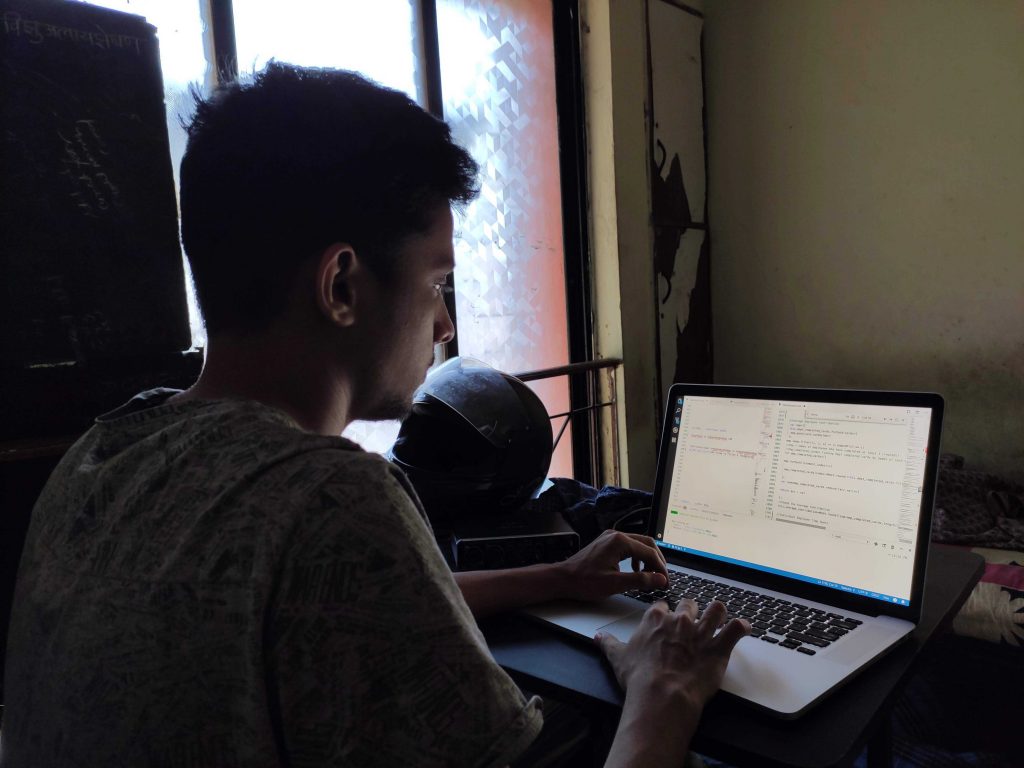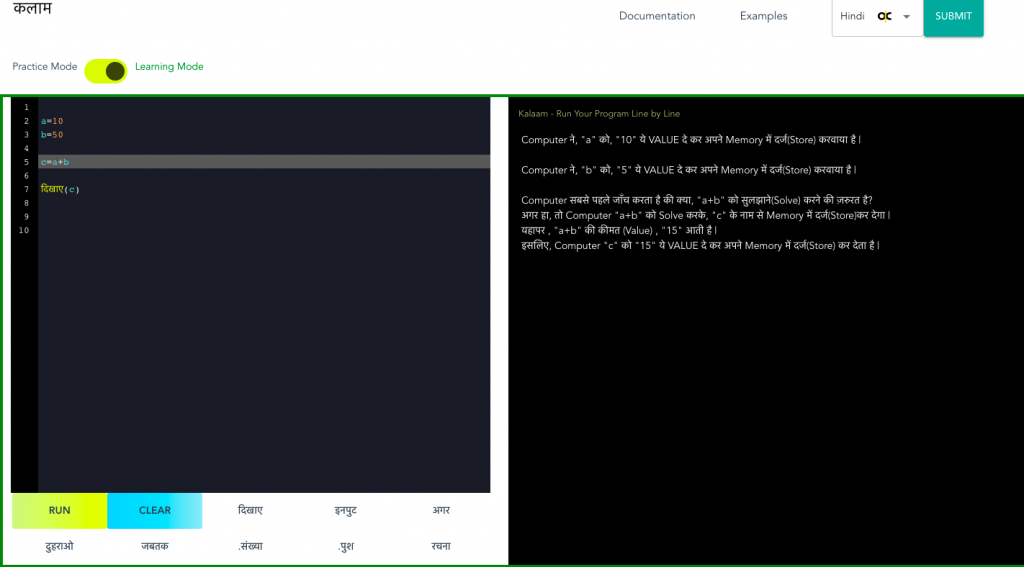What if you could code in Hindi? Meet Swanand - Inventor of Kalaam.io
"Code can replace Cricket in India. With the barrier of English gone, there are chances that we may have hyperconnected communities of programmers from various parts of India, and it'd be really fun to see how it pans out."

Swanand Kadam, the inventor and lead architect of Kalaam.io took just 6 months to build Kalaam.io – A programming language that allows users to write code using their smartphones in Hindi, and Marathi.
From failing 12 times in Engineering and taking 5 years to graduate to developing India’s first Hindi programming language Swanand Kadam’s story is very inspiring. In this blog, we will learn about Swanand’s story of transitioning from a lost engineer to developing Kalaam.io, and then joining Masai School to mentor students, and train them to become awesome computer engineers just like himself.
How do you introduce yourself to the students for the first time?
Since I relate to the students at a deeper level, I introduce them to the world of programming as a journey where the students get to pour their creative imaginations into life through code. “Programming is like creating art, where all you need is a laptop, an internet connection, and the desire to solve problems.”
The first step is to make the students comfortable with programming and eventually lead them to develop an interest in programming. In the 30 week curriculum at Masai School, the first phase of learning is focused on enabling the students to get comfortable with programming and develop an interest in it, because if they don’t love it, how can they possibly excel at it?
The first 2 months of the students are about setting their mindset, and showing them that they can do it. Most of them come with broken confidence, therefore we focus on improving their morale. At Masai, our students undergo a journey of self-exploration and build the rhythm to train hard, and it’s safe to say that the students are their “best versions” during these 7 months with Masai.
In these 30-weeks, our students undergo an intense 9-9-6 program, where they code for 1200+ hours, work on 4 functional projects in teams during Construct Week, and by the time they graduate, they are well-versed software engineers.
“In each month at Masai, you are a different version of yourself.”
How did you learn to code? That too after having failed 12 times in Engineering?
I’m a football fan, and I know that my left foot is weak, but that’s because of lack of practice. Similarly all through my engineering, I thought – “Coding is hard”, but only in my final year I realized that – “Coding was hard because I chose to perceive it as hard”.
As a child, I had always loved technology and was always very curious about it, but in spite of that, I was afraid to code? Why?
Exploring the answer to this question, allowed me to battle my fears, and then with time I slowly started getting comfortable with the terminologies related to programming, and in 6-7 months I saw myself improve drastically. Since I was studying in Pune, I started building for small businesses in Pune and began freelancing while in my final year of Engineering. In retrospect, I think that’s what helped me practice, and get better.

How did you get the idea of Kalaam.io? How did you go on to build Kalaam.io?
I have always been very interested in building software for social impact, therefore my mind keeps thinking on similar lines, and being a programmer I have a solution-oriented approach towards life. While freelancing, and working with small businesses in my final year of engineering, I was lucky to have gotten exposure to products, and businesses that further fine-tuned my problem-solving abilities.
Initially, I didn’t want to build a language, but the process of creating one thing led to another, and Kalaam was incepted somewhere in this journey of experimentation.
Earlier I thought If I read books, and watch tutorials, I will know how to go about building Kalaam, but I realized this was a complex process, and I was overloaded with information. Thus, I stopped reading and started executing.
All of this did seem difficult at the beginning but I had to start somewhere so the first command I started building was the print mechanism so I could output “Namaste Kalaam” onto the screen. It took 4 versions over 20 days but once I had this done I knew I could take on more difficult problems such as implementing conditional statements, loops, and functions.
What were the challenges that you faced in building Kalaam? Especially when you were all alone?
The lack of a mentor would be the biggest challenge. Precisely why I wanted to join Masai School as soon as I heard about them. When I started learning to code, it took me 6-7 months just to figure out the basics. This journey could have been shorter, had I not hit roadblocks in learning.

What are the parallels in your journey of building Kalaam.io and a student’s 30-week journey at Masai School?
Those 6 months of building Kalaam were the most productive days of my life, and I think the same goes for the students. The time they spend at Masai School is their most productive time. In their 30 week journey, the students undergo Masai’s unique 9-9-6 curriculum where they attend classes Monday through Saturday, from 9 am to 9 pm for 7 months.
In each month at Masai, a student is a different and better version of themselves.
When they enter Unit-1, i.e their first month at Masai – they are a blank slate, and from then they go on to build functional front-end apps by the time they enter Unit-3, and fully functional websites/apps by Unit 5, i.e their 5th month at Masai School. Parallelly the students are also learning how to work in teams, brushing up their soft skills, and turning their minds to think big and transform to their better versions.
It’s not an easy journey that they take on, and I am sure that the students can feel in their bones the progress they make once they graduate.
Hypothetically – What would happen if we can code in any desired Indian language?
“Code can replace Cricket in India.” With the barrier of “English” gone, there are chances that we may have hyperconnected communities of programmers from various parts of India, and it’d be really fun to see how it pans out. To top that, Indians are already good at Math, and with the right infrastructure, and learning environments Indians can be trained to become highly skilled proficient programmers.
What advice do you usually give to students?
Constantly challenge yourself, and never be afraid to take on problems that scare you. Never get comfortable with what you’re doing, and be on the lookout for ways to constantly improve yourself by learning new things, and experimenting with new technologies.
Watch Swanand Kadam’s TEDx talk on – “Why we should be able to code in our own languages?”

